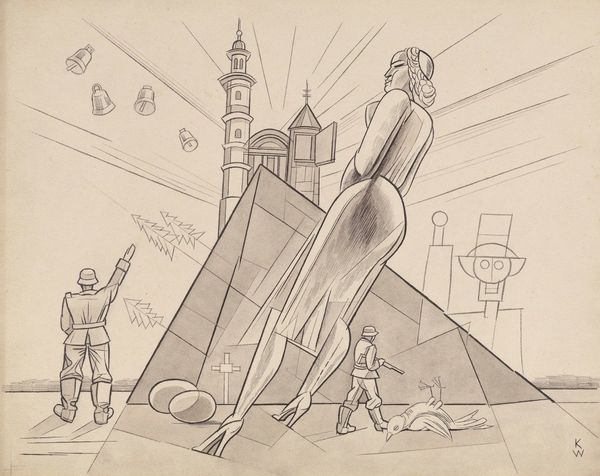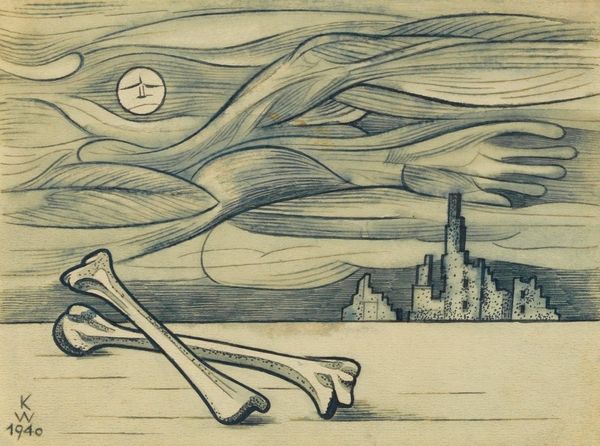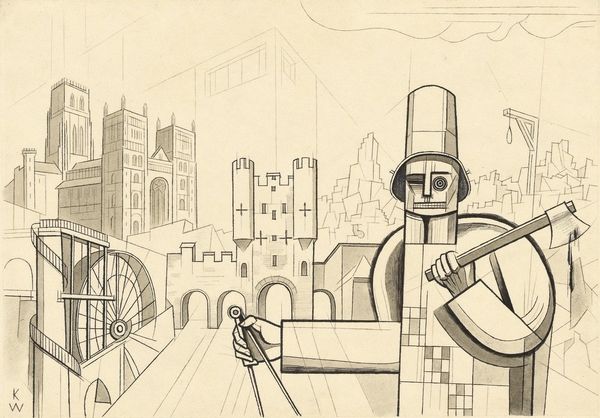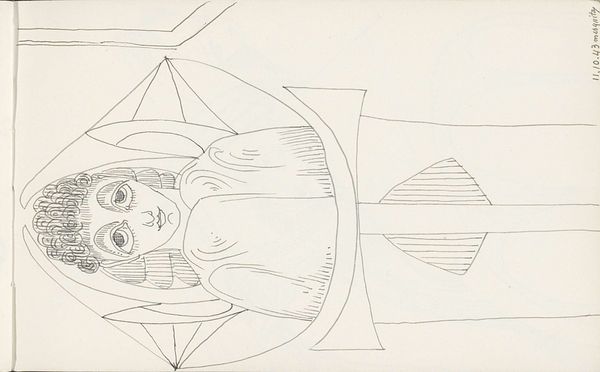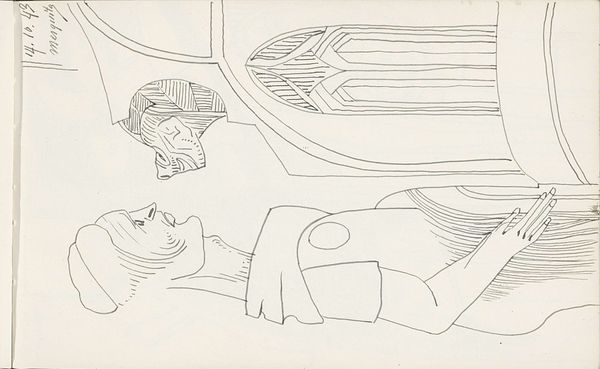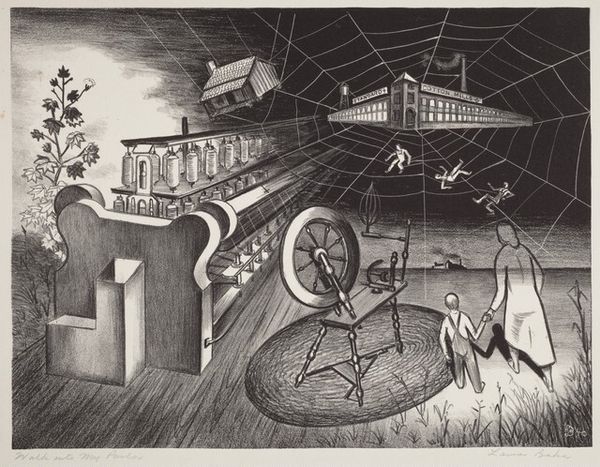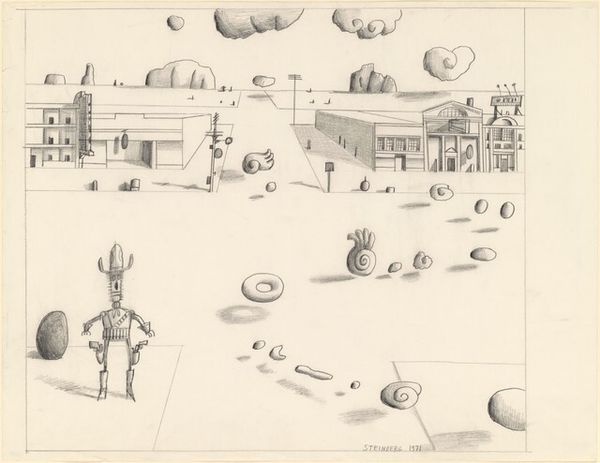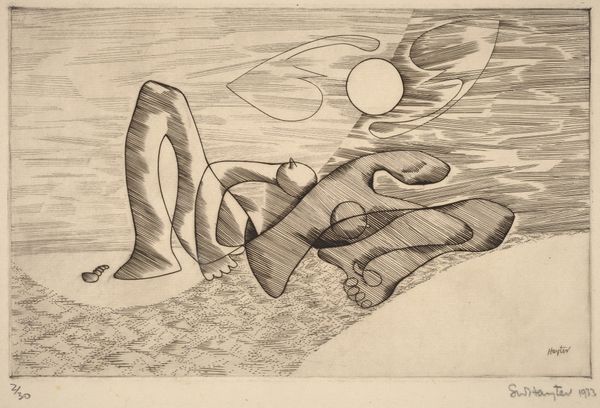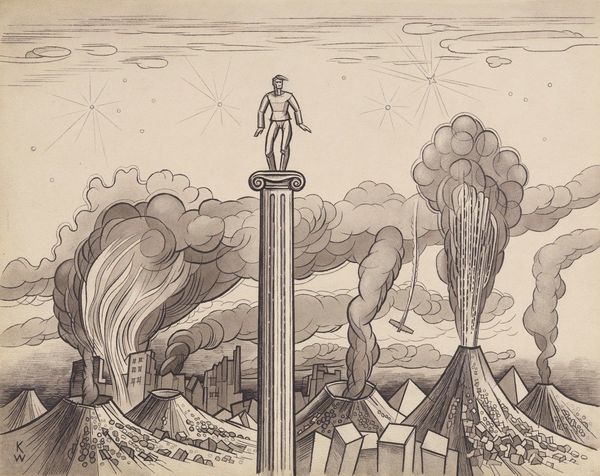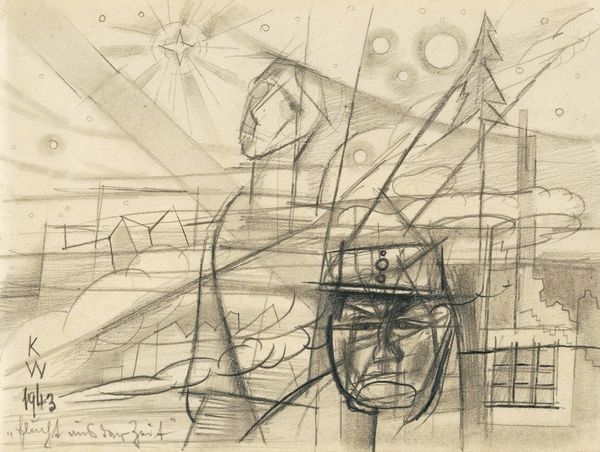
Copyright: Public Domain: Artvee
Curator: Here we have Karl Wiener’s “Auf der Flucht verstorben,” or "Died in Flight," made between 1942 and 1948. The artwork is crafted with ink on paper. Editor: The scene is immediately striking, wouldn’t you agree? A bold, angular figure looms over what appears to be a fallen body, set against an almost theatrical backdrop. The geometry conveys a distinct sense of tension. Curator: The materiality and production tell an interesting story, especially given the historical context. Ink on paper speaks to accessibility—the constraints of wartime might have influenced Wiener's choice. Also, I can imagine the use of ink in short sessions. Editor: The linear style of the drawing itself is captivating. There's something intentionally unsettling in the simplification of forms—the figures reduced to near-geometric shapes, a brutalist rendering of humanity. Curator: That brutality, I believe, also reflects Wiener’s own experiences. Consider the work’s possible narrative; the title indicates themes of desperation and loss associated with those years and Vienna at the time. Editor: Precisely. And how interesting is that the background includes what appear to be geometric and minimalist shapes? Are they an abstract expression of feelings or concepts about being tracked from above by enemy aircrafts, which caused despair in cities such as Vienna? Curator: Well, those could be also a visual metaphor for the constant threat of violence and death. The artist does not spare us the psychological toll of the war. Note that we only have dark gray and neutral tones in this composition. Editor: You are correct. Ultimately, though, the formal qualities resonate deeply. The stark lines, the deliberate distortion, these contribute to a powerful expression of the ravages of conflict. Curator: I concur. By attending to the tangible aspects of creation, we reveal how the conditions of war profoundly affected the art itself, its production, its aesthetics, and how the themes of loss permeate every layer. Editor: Indeed, looking through both the formal and material lens allows us to fully appreciate the depth of feeling embedded in what could, at first glance, seem a simple sketch.
Comments
No comments
Be the first to comment and join the conversation on the ultimate creative platform.
